#jiří trnka studio
Explore tagged Tumblr posts
Video
youtube
La femme | Alain Goraguer
La Planète Sauvage | 1973
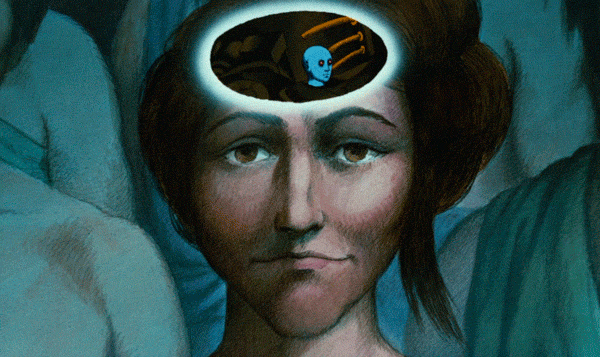
#audio#La Planète Sauvage#Fantastic Planet#René Laloux#Jiří Trnka Studio#Alain Goraguer#science fiction#surreal
44 notes
·
View notes
Text
The Hand [Ruka] (Jiří Trnka/Krátký Film Praha, 1965)
The 1960s were an unusual set of years for the animated industry. With Disney about to go into what's now colloquially referred to as their "dark ages", UPA vanishing into smoke as quick as it came, Hanna-Barbera not quite getting their proper foot in as television hadn't become fully established and Warner Brothers being the only studio not under the weather, but still not grasping the industry significantly, it was an unprecedented opportunity for smaller studios to present their projects to the public without having to compete with giants with exponential amounts of resources for the first time in many decades.
This led to a kind of boom, with shorts from many small artists around the world gaining unprecedented popularity. And with it, as well as the legacy of both popular UPA/Warner shorts and other popular smaller films from decades prior, the medium of animation grew toward the opportunity of maturity and abstractness, straying from the usual straightforward comedies and toward the eerie, the quiet and the political. With it, comes the film to be talked about today.
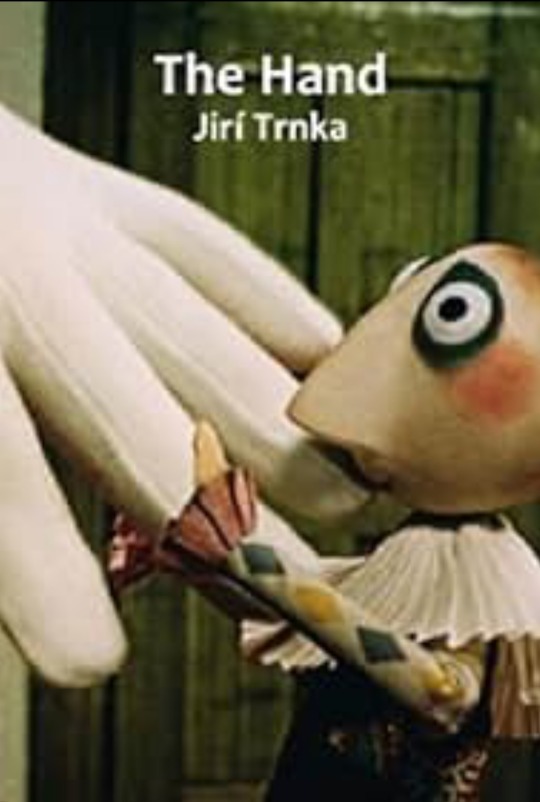
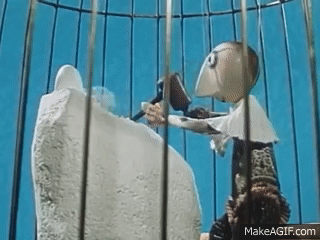
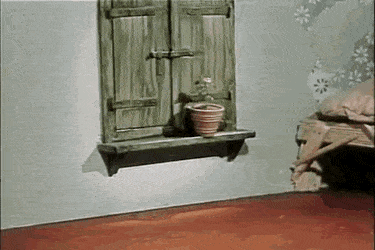
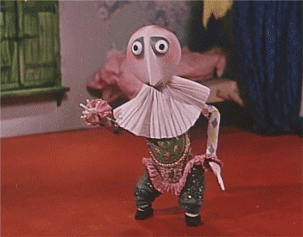
The story of this stop motion short is transparently the story of its context. A Czechoslovakian film made in 1965, the machine dominating eastern Europe was at full force, but running on fumes. Telling the story of a powerless sculpting jester having to survive the whims of the divine hand that torments him, this is also the story of the small common artisan in eastern Europe, being haunted towards the creation of propaganda for their government.
To call this film influential or acclaimed is a double understatement. Months after the creator's death (with this being his swan song), the film was banned in Czechoslovaquia, cited as improper messaging about what it was like to be an artist in the country. As for its critical reception, it takes a comfortable seat among many lists designating it as one of the most important animated shorts in the modern industry's history, influencing many artists of future generations, a notably outspoken one being Rebecca Sugar of Adventure Time and Steven Universe fame.
The fact that the short has been perserved is a miracle, as many of its peer productions are now considered lost media. This fact makes it to me the best example of the era's animated offerings, opening the gates for many artists of upcoming generations to get into experimental grooves in the psychedelic, surrealist and postmodern productions of the decades that followed it.
References:
Reviews, The Hand - IMDB
Political oppression and resistance in Jiří Trnka’s Ruka/The Hand (1965) - Fantasy Animation
The Hand (1965 film) - Wikipedia
1 note
·
View note
Text
Bitching time n°1 :
I just wish Laika studio would stop whatever the hell they have been doing in the last decade, it's so heartbreacking. The cgi and the insane compositing are getting so bad, at his point most people cannot even tell that there is stop-motion in there.
They have such amazingly talented animators, set and puppet builders, just give them an interesting script and let their craft speak for itself!
Their youtube channel is full of some of the most upsetting behind the scene content ever made because you get to look at how amazing everything looked before they made it extremely boring.
( Those water tests were so good, what did they do this, it's maddening !!! )
youtube
At this point I feel like some of the higher-ups just fundamentally do not understand what makes stop-motion interesting and are just trying to compete with big animation studios.
( Also you do not need 100000 facial expressions/deformations to have great expressivity, look at my man Jiří Trnka ! Coraline still kinda rules though )
#sorry for the bad english#10 posts in this blog and i'm already being a hater sorry guys#bitching time#laika#my very non expert opinion
1 note
·
View note
Text
90 Movies in 90 Days: A Midsummer Night's Dream (1959)
I’m kicking off 2023 by trying to watch and review one movie every day for the first 90 days, all of which will be 90 minutes or less. Title: A Midsummer Night’s Dream Release Date: 25 September 1959 Director: Jiří Trnka Production Company: Studio Kresleného a Loutkového Filmu Summary/Review: Czech animator Jiří Trnka created this stop-motion interpretation of William Shakespeare’s play as his…

View On WordPress
0 notes
Text
The Hand (1965)
Ruka, better known as, The Hand(1965) written and directed by Jiří Trnka, sometimes called “the Walt Disney of Eastern Europe'', this film, was his masterpiece. Born in 1912 Austria-Hungary, Trnka was driven to pursue art by his love of puppet theater, he graduated from Prague School of Arts and Crafts in 1936 and attempted to start a puppet troupe of his own before World War II broke out. The group was dissolved because of this and Trnka was hired to be an illustrator for children's literature. After the war had passed he would reignite his passion for theater by producing experimental short animations. He is most known for his signature implementation of carved puppets animated with stop-motion but he would also create traditionally hand drawn and cut-out shadow puppets. Eventually, Trnka would have little involvement in the actual animation process as he would primarily craft the puppets, direct and write the scripts for his later works. As his career progressed Trnka would become disillusioned with the world of art, following the start of the sixties, his films would take on a heavy degree of pessimism, shown by his writing taking on a satirical and introspective lens. Even though he got his start in the industry working on children’s literature, Trnka’s films were mostly intended for a more adult audience and his final project was no exception.
Showcasing the versatility of his film making technique, Ruka would be a multimedia project. A carved puppet, sculptures, models, clay, a human hand, cutout illustrations and pulsating electronic backdrops are all present in this 20 minute short. The main and only carved puppet, bearing resemblance to a harlequin, is a pottery sculptor, creating pots for his favored flower, watering it everyday and caring for it in his own little world. His routine is interrupted by an ominous white glow who sees his creation and encourages him to make something different by shaping the pot into a hand. The puppet refuses but the glove continues to try and persuade him with gifts and then propaganda. The puppet tries his best to resist but is eventually tricked by the hand and is put into a birdcage. Puppeteered by strings, the harlequin is forced to craft a marble statue for the hands, lifeless and defeated upon its completion he is awarded medals and fancy objects by the hands for his service, which he has no reaction to. Once the hand leaves he quickly burns his strings with a nearby candle and pushes over the statue to make his daring escape. Tumbling through an endless dark void the puppet finally makes it back to his home. After experiencing the horror of the will of the hands he takes apart his bed to barricade himself inside but in his haste he knocks over his coveted plant from the top of a dresser, it hits him right on the head, sending him tumbling backwards and ending his life. The hand easily breaks down his barricades only to find their little artist motionless. They give him a proper burial, sending him off with his flower next to his candle lit coffin, the flower finally budding, growing to completion, despite the circumstances. The subject matter of the film showcases a universal truth that all true artists fear, the silencing of one’s vision, being forced to create something that brings you nothing but shame as it takes hours of your life from you. Without a doubt, Trnka would have experienced compromise of his visions working within art studios and with parties that he would need the approval of to receive funding, as long as another person to approve your work for it to exist, compromise is present. The silence of this project speaks louder than any words could, much of an artist's suffering is silent when dealing with parties much larger than the themselve. The true greatness of this short is that its story is not exclusive to the art world, though that is where I assume Trnka got the inspiration for this work, its message speaks on the whole of the dangers and lengths powerful entities will go to, to enforce conformity. With such a powerful message the film has been universally praised, winning 2 awards the year it was produced and another in 1966 and 1990. It will remain a timeless classic due to Trnka's contribution to the world of film and animation. Ruka was however banned from public display in the country it was produced in, Czechoslovak, for two decades, as it was considered a protest towards the current the countries communist state towards artist works. 4 years later Trnka would die from heart complications. Leaving The Hand(1965) to be his final film.
References:https://en.wikipedia.org/wiki/The_Hand_(1965_film) https://en.wikipedia.org/wiki/Ji%C5%99%C3%AD_Trnka
0 notes
Photo

𝙵𝚊𝚗𝚝𝚊𝚜𝚝𝚒𝚌 𝙿𝚕𝚊𝚗𝚎𝚝 𝟷𝟿𝟽𝟹
58 notes
·
View notes
Text
La mia vita da Zucchina
La mia vita da Zucchina
Benvenuti o bentornati sul nostro blog. Nello scorso articolo ci siamo concentrati ancora una volta sulla Disney e il suo Periodo di Bronzo, arrivando in questo modo al loro 22° classico animato ossia Le avventure di Winnie the Pooh. Sono cresciuto guardando questo film, da piccolo l’avrò visto svariate volte e temevo, ora che sono cresciuto, che fosse invecchiato male. Invece mi sono dovuto…

View On WordPress
#adozione#Animation#animazione#bambini#Blue Spirit Studio#Céline Sciamma#Claude Barras#Claymation#drammatico#film#film d&039;animazione#film d&039;animazione francese#France 3 Cinéma#Francia#Gaspard Schlatter#Gebeka Films#Germano Zullo#Jiří Trnka#La mia vita da Zucchina#Ma vie de courgette#Michel Vuillermoz#Morgan Navarro#orfani#Paulin Jaccoud#Recensione#Recensione film#Rita Productions#Sixtine Murat#Sophie Hunger#stop-motion
2 notes
·
View notes
Text
Old Czech Legends (Staré pověsti české) - Jiří Trnka, 1953
Old Czech Legends (Staré pověsti české) – Jiří Trnka, 1953
After a lean and troubled wartime era, Walt Disney started the 50s with a trio of the studio’s most beloved films – Cinderella, Alice in Wonderland and Peter Pan. This was the Silver Age of Disney, and it lasted until Uncle Walt passed away during the production of The Jungle Book in 1966. Around the same time across the Iron Curtain, Jiří Trnka, a Czech film maker referred to as the “Walt…

View On WordPress
#Czech animation#czech drama#Czech film reviews in English#Czech history#Czech myths and legends#Czech puppetry#Old Czech Legends 1953 Film Review#Old Czech Legends Jiri Trnka#Staré pověsti české 1953 Jiří Trnka
2 notes
·
View notes
Photo


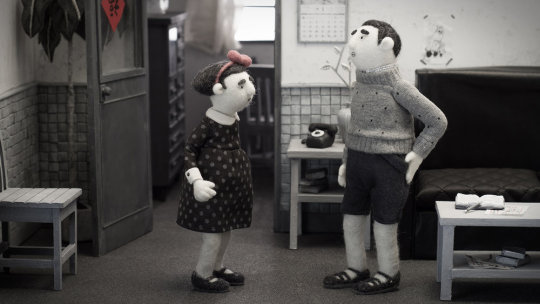
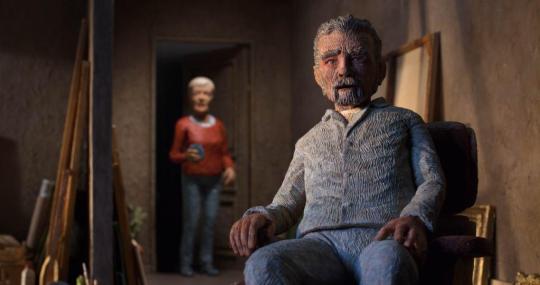
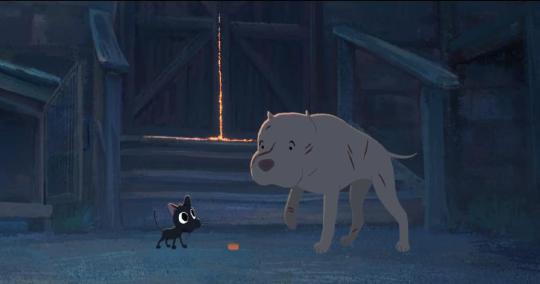
Best Animated Short Film Nominees for the 92nd Academy Awards (2020, listed in order of appearance in the shorts package)
Since 2013 on this blog, I have been reviewing the Oscar-nominated short films for the respective Academy Awards ceremony. This is one of my favorite traditions for the “31 Days of Oscar” marathon I hold yearly, and I recommend to all my North American followers to seek these shorts out (see this) – they have just released to theaters as of this review’s publication and the reach of each package’s distribution increases every year. As a one-off for the 92nd Academy Awards, the Oscars are being held on their earliest weekend ever, giving everyone less time to see the nominated shorts.
Without further ado, here are the Academy Award nominees for Best Animated Short Film. Three of the five are stop-motion animation. It’s a solid bunch and – despite the fact I have seen better nominee slates – all fully deserving of their nominations (it is rare I feel that way) in a tightly contested year. They are all, in some ways, featuring characters and showing how they connect to others.
Hair Love (2019)
Co-directed by Matthew A. Cherry (former executive at Jordan Peele’s Monkeypaw Productions); Everett Downing Jr. (a journeyman storyboard artist who has worked with Blue Sky, DreamWorks, Netflix, and Pixar); and Bruce W. Smith (creator of The Proud Family and former supervising animator with Walt Disney Animation Studios), Hair Love becomes what is most likely the second film in the history of the Academy Award for Best Animated Short Film to have significant involvement from a former professional athlete (Cherry; the first is probably 2017′s Dear Basketball). Distributed by Sony Pictures Animation following a Kickstarter campaign, Hair Love played in front of 2019′s The Angry Birds Movie 2 – talk about a disparity in quality. The film follows a young girl as she refers to a YouTube channel (this film showcases modern technology but does not, like many other animated films, date itself in its technological depictions) to style, if not tame, her hair. Her father – who appears to have little experience with cutting or styling hair – is hesitant to help his daughter, but they struggle and learn together. The final moments of Hair Love reveal that their time learning from these online tutorials extends beyond their bonds as father and daughter.
Hair Love, riding on Hollywood goodwill from figures rarely associated with animation, has been lauded for its depiction of black fatherhood. In American popular culture, black fathers in black-centric narratives have often been portrayed as abusive or absent. So to see the opposite in hand-drawn animation is a welcome sight. The daughter’s hair almost has a life of its own and is normalized (black hairstyles have long been otherized in the West); an abstract sequence where the father is doing combat with the out-of-control hair represents the awkwardness of this scenario – with zero dialogue – perfectly. For an animation studio ridiculed for releases like The Emoji Movie (2017), Spider-Man: Into the Spider-Verse (2018) and Hair Love serve as partial correctives.
My rating: 8.5/10
NOTE: Hair Love can be seen on YouTube as of this review’s publication.
Dcera (Daughter) (2019, Czech Republic)
The Czech Republic can lay claim to being the home of the late Jiří Trnka, arguably one of the greatest, most innovative stop-motion animators of all time. Carrying that legacy forward is Daria Kashcheeva, a graduate of the Film and TV School of the Academy of Performing Arts in Prague (FAMU). Her graduation film, Dcera (“Daughter” in English), won a Student Academy Award and was deemed the best graduation film at the famed Annecy International Animated Film Festival (the most important all-animation film festival in the world). In Dcera, we find a young woman at the side of her father’s hospital bed, reminiscing about their relationship. Wordless and shot largely with a shaky camera and in close-up, we see several images from the woman’s childhood – how her father, barely scraping by with household duties, had little time to express his love to her. Dcera often breaks into literal flights of fancy and the daughter’s surrealistic imagination. And yet even when retreating into a world crafted so that she can escape, there is a longing to bring her father in.
Kashcheeva’s notes about Dcera elicit that she wished to accomplish an, “authentic immediacy and a para-documentary nature” to her film via the film’s constant close-up shots and low depth of field. She mostly succeeds; although the shaky camera is distracting and prevents the audience from forming an emotional connection with the characters onscreen. The stop-motion puppets appear to be made of papier-mâché and are intentionally rough –reflecting how difficult their lives have been and the innumerable imperfections of their personhood. The production design – when we are allowed to see it (the lack of production quality is not any fault of the film’s, considering that it is a graduation work) – resemble something from a lucid nightmare. Dcera is an outstanding feat of stop-motion stylization. In its final minutes, it seeks to understand and to forgive that which was never realized. Its emotional impact is imperfect, but its intentions nevertheless pack a wallop.
My rating: 7.5/10
Sister (2018)*
When the Chinese Communist Party brought an end to its one-child policy in 2015, it concluded a decades-long experiment that has left China in a demographic bind. Stemming from a decision made in 1979, the policy’s consequences include a skewed age disparity and sex ratio at birth that will affect the nation for more several decades. Siqi Song’s graduation film from CalArts, Sister, has the one-child policy in mind. The film, narrated by Bingyang Liu (no previous film credits) is a reflection by a man thinking about his life with his little sister. More than midway through Sister, the audience learns that the film is nothing more than speculation. In China even now, the one-child policy – since replaced by a two-child policy – has left its mark on numerous generations be they children, parents, grandparents. The film’s unique character design is wool-based, with its monochrome pallet recalling an older family photo album.
According to Song, the film’s story, “didn’t change from the very beginning. [She] always knew the film would be about a man imagining how his life might have been like had he had a little sister.” What did change while Song – a “little sister survivor” whose family made a tremendous effort to keep her a part of their family – made Sister were the stories of a brother and sister as the two grow up. The never-to-be siblings have their conflicts, as well as their moments of familial love. Not all of the ways this is depicted work, most notably the scene where the sister grows beyond her crib to become a giant looming over her brother (the metaphor here is too heavy-handed). Our narrator ponders whether he might have been a different person if his mother – pregnant with his younger sister, wanting very much to bear her – never had the policy-forced abortion. Given the trauma it inflicted on his mother, the narrator – even from an early age – will be left pondering this well into his adulthood. Is there regret in his narration? Guilt? I don’t have any answers, but I will leave it to those of Chinese descent to discern theirs.
My rating: 8/10
*Sister is entirely in Mandarin. For non-English language films, I usually list the film along with its country/countries of origin unless it was primarily an American production. Despite Sister being listed as an American/Chinese co-production by Song, I see no evidence of a Chinese studio backing the film. For record-keeping purposes, Sister will be deemed an American film.
Mémorable (2019, France)
Last year, Ireland’s famous Cartoon Saloon garnered acclaim for Louise Bagnall’s Late Afternoon. Late Afternoon, an expressionistic study in an elderly woman’s dementia, is a distant cousin to Bruno Collet’s Mémorable. Here, an artist named Louis (André Wilms) shifts between periods of remembrance and forgetfulness. His wife, Michelle (Dominique Reymond), tends to his needs and to his increasing disconnection to the things and people around him. If Louis has one fixture in his life, it is his painting – with brushes or, close to the end, with his fingers. Collet, noting the increase of short films – animated or otherwise – about dementia in recent years, indeed questioned the wisdom of yet another film about someone suffering from it. He then encountered the works of artist William Utermohlen. Utermohlen, like Louis, continued painting even as his dementia impaired his understanding of his surroundings, let alone his work. Collet, now convinced of the validity of his plans by learning of Utermohlen’s life, set straight to work on Mémorable.
Mémorable evolves as the film progresses. What seems like a straight stop-motion animated short film transforms itself as Louis’ dementia worsens. By the film’s end, Louis’ figure begins to melt into something like oil paints, making him a living Impressionist painting while others around become surreal on the terms of a Picasso or Dali. With Mémorable containing plenty of dialogue, none of this ever detracts from this short’s abstractions The film’s final moments – an uplifting dance scene between Louis and Michelle – is an extraordinary marriage of stop-motion animation and computerized animation. By then, Collet has depicted the progression of Louis’ dementia in as cinematic a way as possible using an array of styles that could not have been predicted within a twelve-minute animated short film. The technical daring of Mémorable and the strength of its artistic conceit is breathtaking to behold.
My rating: 9/10
Kitbull (2019)
If any animation studio has a history with animal, it is Disney. Released as one of Pixar’s “SparkShorts” – a program created in 2019 to foster the talents of Pixar’s younger animators to force them to make short films with limited resources – Rosana Sullivan’s Kitbull joins that esteemed company. Sullivan, a storyboard artist who worked on the likes of Monsters University (2013) and Incredibles 2 (2018), was previously training to be a veterinarian and had helped many pit bulls in clinics and shelters. She, “saw how sweet and gentle they could be, despite [her] initial fears.” Her work with unadopted black cats formed the other half of what would become Kitbull. In San Francisco’s Mission District, a scrawny kitten and a pit bull who is forced into dogfights (even the implication of dogfighting would render Kitbull ineligible for wide theatrical release by Disney executives, knowing their insistence on a sanitized brand) strike up a friendship.
The design of the kitten is not realistic, but it would not be believable if Kitbull was filmed as a stop-motion or CGI-animated film. The kitten’s unrealistic body proportions make it more appealing and the minimalism of the pit bull’s design (there is a minimum amount of lines used to trace its facial shape) is effective artistic economy. The pit bull is a type of dog in need of an image rehabilitation. Perceived the be among the most violent of dogs, pit bulls are anything but naturally violent and Kitbull plays into this misconception. Sullivan’s experience as a former veterinarian student are fused with themes of loneliness and trust-building. Cut down from an 18-minute-long storyboard to its nine-minute runtime, Kitbull is an efficiently told animated short film evoking the pathos of animal-centric Walt Disney Animation Studios’ feature- and short-length films of the 1930s and ‘40s.‡
My rating: 8/10
‡ Which, for younger readers that have not seen Disney films from those decades, should be taken as a high compliment.
NOTE: Kitbull can be seen on YouTube as of this review’s publication.
^ Based on my personal imdb ratings. Half-points are always rounded down.
From previous years: 85th Academy Awards (2013), 87th (2015), 88th (2016), 89th (2017), 90th (2018), and 91st (2019).
#Dcera#Hair Love#Kitbull#Memorable#Oscars#Sister#Daria Kashcheeva#Matthew A. Cherry#Everett Downing Jr.#Bruce W. Smith#Rosana Sullivan#Bruno Collet#Siqi Song#92nd Academy Awards#31 Days of Oscar#My Movie Odyssey
7 notes
·
View notes
Photo

Delighted to announce that my short animated film "Wunderkammer" will screen in the "Midnight Animation: Body" block at Anifilm 2019 (@anifilmfestival) in Třeboň , Czech Republic. May 11th. This feels like a stylistic homecoming for this project, since it was inspired (in part) by Czech paper cutout animation (most notably the work of Jiří Trnka Studio in Prague). #animation #papercutouts #paperart #traditionalanimation #papercutoutanimation #czechrepublic #animationfestival #eroticism https://www.instagram.com/p/Bww9EYsAByV/?utm_source=ig_tumblr_share&igshid=1te8aftqqnv8o
#animation#papercutouts#paperart#traditionalanimation#papercutoutanimation#czechrepublic#animationfestival#eroticism
2 notes
·
View notes
Text
On Animation
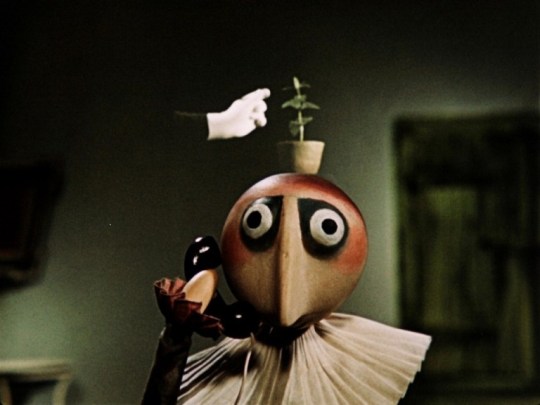
These are mostly some personal views and experiences, you are welcome to read but don’t hold high expectations. In the last 2 years or so I didn’t watch as much anime as I used to, probably because I don’t find anime as entertaining as before. My interest in sakuga and Japanese animators was the first time I found value in animation itself, regardless of other aspects such as the story. The sheer expressive power of Ohira’s drawings, or Kanada’s unique timing, all brought me joy and still do.
Yet even this joy I find in sakuga won’t last forever, and I can say that rarely does any scene amaze me like my first contact with works from not only legendary animators such as Ohira and Kanada, but even Ebata and Tanaka. I didn’t lose my interest in commercial sakuga that’s for sure, most what I watched lately were obscure shows I wanted to see what X animator or X director did in them. It’s just that I’m looking for something new, and I knowingly didn’t experience basically anything the wide medium of animation has to offer.
I think the majority of anime fans, animation fans in general even, just watch animation because it’s “anime” or maybe “Disney”. If an anime with a somewhat good story and almost still good-drawn images was to be produced, I bet it would gain some following and popularity among non-japanese fans at least. I also bet such a thing already happened. This reminds of a funny phrase I heard from a friend: “people think that animation isn’t important in animation”.
But then, everyone is free to prefer whatever they want in my opinion. I just think that people who have this view don’t see the real merit of animation and its real beauty, to a big extent at least. Works with outstanding stories and fascinating themes such as Ghost in the Shell receive praise mostly due to that aspect only, the story and themes, with maybe mentioning “good and smooth” animation as a side point. But such works exhibit what really makes animation what it is and takes of advantage of the capabilities of this medium, just look at the Hollywood adaptation to compare(regardless of the fundamentally different execution).
Maybe the main approach of commercial animation takes most of the blame here. Ask any random person “what is special about animation?”, and probably the answer would be something along the lines of “unlimited imagination” or “fascinating imaginary worlds”, referring to Disney’s princesses or Ghibli's fantasy. Yet live-action movies are capable of creating such worlds thanks to modern and even kinda old technology(if we ignore the ongoing controversy regarding the definition of these works), while other more realistic animation works such as Satoshi Kon’s show animations’ features and perks, the features that are the reason why he famously prefered to use animation in all his movies despite being more of a live-action director in nature. What I’m trying to say is this: animation isn’t just a container with the sole purpose of conveying a story or a message, nor is the importance solely in the content conveyed, but in the way it’s conveyed. That’s why a lot of people who work in animation refuse the idea of mimicking live-action, for example.
After sakuga my interested shifted towards independent and experimental animation especially the japanese ones, like Koji Nanke and Youji Kuri. The story of independent japanese animators is a long one, better covered here. Watching their works made me realize more and more how diverse animation is, and the different exciting ways to transmit an idea through animation. You may say that everything I said till now was just cretesizing commercial animation and praising independent/experimental animation because I love them, yet I didn’t deny that Ghibli and Disney(2D) movies, which are commercial for sure, are some of the best animation works from a technical and artistic standpoint. What I’m criticizing is the narrow outlook on animation, even among the commercial works. Animation isn’t only hand-drawn or 3D, you have collage and stop-motion and puppets and others. It shouldn’t come as a surprise that the former Association of Japanese Animations(AJA) president, the late Kihachiro Kawamoto, never drew anything, he was but an amazing puppet animator. Before Kawamoto was Tezuka, a person who plainly hates commercial mainstream animation and whose experimental works probably outnumber his commercial ones. Kawamoto’s successor, the current president Taku Furukawa, is a renowned independent animator and one of Youji Kuri’s students. Movies such as Isle of Dogs getting a wide positive reception makes me happy.
A famous use of collage was in Madoka Magica’s labyrinths, which Gekidan Inu Curry duo handled. It consists of Shirashi Ayumi(former Gainax) and Anai Yosuke(former defunct studio named Tanto). Their participation in Madoka Magica and many other Shaft shows came probably due to their relation with the director Yukihiro Miyamoto. I went a bit off track, but all this was to say that I enjoy Kihachiro Kawamoto’s collage works especially such as The Trip(1973), although he is better known for his puppet works, that are great nonetheless. This isn’t because I don’t enjoy puppetry, Jiří Trnka amazes me- for example. I bet that his magnum opus, The Hand(1965), would astonish any animation fan not only in its visuals, but in the way it handles and presents its themes as well, which led to banning this movie that obviously opposes the communist occupation of Czech.

from right to lefr: Madoka Magica, The Trip, Kenju Giga.
Now that I mentioned Czech, it’s one of the richest countries when it comes to animation and animation history. Many other east-european countries as well. Trnka is enough on his own, but even with other animation arts it’s a region that has a rich and old history of experimentation and early works. Tezuka’s inspiration for his short Jumping(1984) came from none other than a hungarian short called The Fly(1980). The animator behind Jumping, Junji Kobayashi, reminds me always of a fun fact about Tezuka. Kobayashi himself has a deep passion for insects and wildlife in general. Alongside being a member of multiple insect societies and organisations, including The Japanese Association for Insects, he wrote a book on how to animate animals based on Mushi/Tezuka Pro's principles. But if there's a bigger insects nerd than him, it's Tezuka, who deliberately added the kanji for insect(虫) in his pen name(same reading to his original name). Tezuka also has some books on insects or animals, in a fictional or realistic depiction. The last book I want to mention, the most interesting probably, is Kobayashi's "Osamu Tezuka That No One Knows - The Mess of Mushi Pro", an interesting title especially when you consider that Kobayashi is one of the oldest Mushi Pro members, having spent about 23 years with Tezuka till his death. Kobayashi joining Mushi Pro in the first place may have been due to Tezuka sharing him his insects passion, as "Mushi" is the same "insect 虫" in Tezuka's pen name after all.
Anyway, what I was trying to say is this: If you are looking for something more than just "brainless fun", try watching different kinds of animation, the world of animation is vast and diverse. Some works that I like(not necessarily a good start for everyone):
Aru Machikado no Monogatari(1962, Mushi Pro)
The first project by Tezuka's Mushi Pro. He tried different styles in this movie, demonstrating his intentions from the beginning. Directed by Eiichi Yamamoto, whose start was in another experimental studio named Otogi Pro, with animators such as Gisaburo Sugii, it is one of the best works the studio produced. It contained a variety of interesting and beautiful styles, even limited animation was used although there is no economical constraint here, what makes me think that it was an experiment before going all limited with Astro Boy later. A great movie overall.
Jumping(1984, Tezuka Pro)
There is a nice interview about this short and experimental works in general with Osamu Tezuka here.
Machikado no Märchen(1984)
The Hand(1965, Jiří Trnka)
Tabi(1973, Kihachiro Kawamoto)
Kenju Giga(1970, Kihachiro Kawamoto)
The Fly(1980, Ferenc Rofusz)
#osamu tezuka#Junji Kobayashi#Mushi Pro#Trnka#Kichachiro Kawamoto#Taku Furukawa#Youji Kuri#Experimental Animation#Independent Animation
12 notes
·
View notes
Text
Vlasta Pospíšilová, Icon Of The Golden Age Of Czech Puppet Animation, Dies At 87
Pospíšilová was a major contributor to the work done at the legendary Jiří Trnka Studio before launching an outstanding directorial career. from Cartoon Brew https://ift.tt/KgxdUjC
1 note
·
View note
Text
ŘÍJEN AŽ PROSINEC / NÁVRHOVÁ TVORBA A REALIZACE MULTIMEDIÁLNÍCH VÝSTUPŮ
POJMY
TECHNIKY ANIMACE
Princip a druhy:
Slovo animovat znamená něco jako oživovat. Pochází z latinského anima = duše. Animace je oživená kresba, předmět, loutka nebo obraz, který animujeme, rozpohybujeme.
Základní princip
Animace je sled statických obrázků promítaných správnou rychlostí. Obrazy zachycují fáze pohybu. Pohyb snímáme snímkem po snímku a poté je promítneme. Ideální rychlost projekce je 24 snímku za vteřinu (světová kinematografická norma) nebo 25 snímku za sekundu (u videa a TV).
Iluze vzniká díky nedokonalosti lidského oka, která se nazývá setrvačnost zrakového vjemu. Tuto vadu popsal v roce 1824 anglický vědec Peter Mark Roget ve svém spise Persistence of vision. Obraz zůstane na sítnici 1/10 sekundy i poté, co obraz zmizí a objeví se jiný, tudíž se obrazy prolnout na 1/10 vteřiny.

EadweardMuybridge, fotograf a vynálezce, při jedné sázce, kdy vyfotil 24 snímků za sebou běžícího koně, zjistil, že když se daly fotky dohromady, vznikl plynulý pohyb. Tohohle využil a fotil i jiné zvířata na krátký čas.

Animace je nový nereálný pohyb, nezávislý na fyzikálních zákonech. Charakteristické znaky jsou přehánění, deformace, nadsázka, stylizace, groteska, personifikace (lidské vlastnosti u věcí či zvířat), metafora (=přenesení významu na základě podobnosti) a přehnané emoce.
Kreslený film
Postup při výrobě animovaného filmu: kreslení fázi po fázi na papír nebo pauzák.
Potřeby:
· Prosvětlovací stůl
· Animační jehly
· Lochovačka (perforace papíru, aby se nám jednotlivé fáze nepohnuly a my v tom neměli bordel)
· Papír, pauzák, nebo fólii
1. Animace na papír – nejprve charakter kresby tužkou, pastelama, pastelkami. Animuje se naráz postava +pozadí na jeden papír
2. Animace na fólii – nejdříve kontury, poté výplň (barvami ze zadní strany), využívá se průhlednost fólie – dá se pracovat ve více vrstvách: 1. Fólie postava, 2. Fólie detailnější animace, 3. Fólie pouze pozadí atd atd.
3. Animace v softwaru – pracuje s vrstvami a s grafickým tabletem a programem, (Photoshop, TV paint, Mirage), získáme vyhlazené linky a hladkou kresbu.
Ruční animaci animujeme na 12 snímků za sekundu, které ve finále zduplikujeme na 24 fps.

Čeští režiséři a výtvarníci
· Adolf Born – Mach a Šebestová
· Vladimír Jiránek – Bob a Bobek
· Zdeněk Smetana – Rákosníček, Křemílek a Vochomůrka, Štaflík a Špagetka, Kubula a Kuba Kubikula
· Jiří Šalamoun – Maxipes Fík
· Zdeněk Miller – Krteček
· Vladimír Jiránek – Bob a Bobek, Pivo přes ulici, Zpráva o stavu civilizace
· Václav Bedřich – Víla Amálka, Maková Panenka, Večerníček
Zahraniční
· John Kricfalushi – Ren a Stimpy (Kanada)
· Koji Yamamura: Atama Yama
· Matt Groening – Simpsonovi a Futurama
a) Totální animace – animujeme vše naráz v jedné vrstvě – pohybuje se úplně všechno
· Michaela Pavlátová: Řeči, řeči, řeči
· Pavel Koutský: Curiculum Vital, Portrét
· Ferenc Rofúsz: Moucha
· Fréderic Back: Muž, který sázel stromy (získal oskara za animaci)
b) Animace malby – malba olejovými barvami na skle, vrstvy se postupně přemalovávají, animujeme vždy celý obraz. V Číně malovali akvarelem, navazovali na čínskou kaligrafickou tradici. Italská skupina BLU animuje malbu na zdi.
· Stařec a moře – Sergej Petrov (1999) Rusko + Kanada + Japonsko
c) rotoskopie – nejprve si pohyb nahrajeme na kameru a poté překreslujeme snímek po snímku (Sněhurka a 7 trpaslíků)
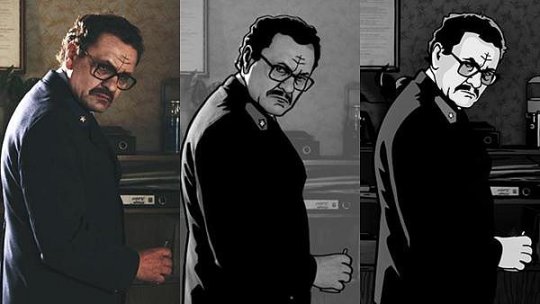
ANIMACE V PROSTORU
a) Loutková animace – animujeme klasickou loutku velikosti 20 – 30 cm, potřebujeme:
· OCELOVÁ KOSTRA S KLOUBY; nebo drátěná kostra, která ale tolik nevydrží
· musí držet každou fázi, části těla jsou dřevěné, nebo z moduritu s měkkou výplní
· KOSTÝM; někdy je podšitý olověným drátem, který drží materiál nahoře a my můžeme animovat i povrch loutky
· hlava; je vyměňovací, abychom mohli měnit výraz, nebo máme vyměňovací ústa či oči
· nohy, které se zespod dají přišroubovat k podlaze (aby loutka držela rovnováhu i na jedné noze)
· kostra, s ohebnými klouby, které se dobře animují (mají minimální pohyb) a které zároveň loutku udrží
· SCÉNA; pevné kulisy upevněné k podlážce, vše přilepené, aby se nehýbalo (například knihy v poličce); okna + dveře by měly být animovatelné, a měla by být rozměrově k loutce
· REKVIZITY, které hrají, by měly být lehké, aby je loutka unesla, nejlépe z pěnového plastu nebo balzy, pomocí patiny docílíme iluze materiálu kovu, nebo dřeva
Loutkovou animaci dnes snímáme foťákem a nahlížíme přes monitor, dříve se fotila frame by frame kamerou na 35mm film. Dal se nastavit čas expozice 1/25 až několik sekund, a tahle změna sloužila při zatmívačkách a roztmívačkách, dále pak také pří prolínačkách, kdy se část naexponovaného filmu vrátila na zpět o několik fází – 2 fotky na jednom políčku.
Využívaly se triky:
· dvojexpozice – nasnímání a posunutí filmu zpět a jeho následovné znovu nasnímání
· polopropustná zrcadla – házela odrazy ze scény, která byla mimo záběr
Nejznámější loutkoví animátoři:
· Jiří Trnka – měl školu loutkové animace, loutky si sám navrhoval a sám jim maloval hlavičky. Natočil filmy Ruka, Švejk, Kybernetická babička
· Vlasta Pospíšilová – navštěvovala Trnkovu školu, animovala: Fimfárum, Lakomá Barka, Pat a Mat, Broučci
· Břetislav Pojar – Zahrada (kombinace s poloplastickou animací), O skleničku NAVÍC
· Tim Burton – animoval latexové loutky

b) Animace plastelíny – je to určitá forma loutkové animace, loutka s kostrou je obalená plastelínou, takže pohyb kostry animujeme formou přemodelováním, modelujeme výrazy, loutky mají více gumový charakter. Nohy loutky jsou silnější, aby se nehroutily, a místo plastelíny můžeme použít i hlínu. Technika modelace – přemodelovávání každé fáze loutky, animace je velmi dynamická.
· Jan Švankmajer – Možnosti dialogu (z hlíny); Tma, světlo, tma
· Nick Park – Walace a Gromit, Slepičí Úlet (loutky mají plastelínový vzhled, ale jsou dělané z latexu, plastelína se využívá jen okrajově
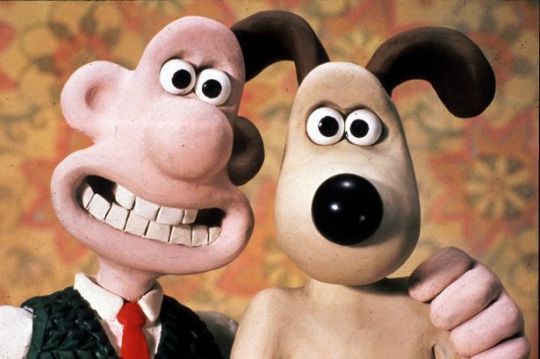
c) Animace předmětů – frame by frame snímaný pohyb různých věcí, někdy je potřeba udělat „kostru“ (při animaci textilu), nebo animovat obyčejné předměty, klidně už i hotové figurky
· Jan švankmajer – filmové triky (Návštěvníci), Jídlo, Otesánek
· Hermína Tyrlová – uzel na kapesníku
· Jiří Bárta – na půdě
· Garik Seko – panika v městečku

d) Pixilace – animace živých herců, statické fáze pohybu. Můžeme využít triky jako létání, klouzání, padání, nadpřirozené jevy
· Aurel Klimt – Eaten – Krvavý Hugo
· Miloš Tomič
ANIMACE V PLOŠE 2D
a) Poloplastická animace (reliéfní)
Díky ní získáme dojem prostoru, animujeme na stole se skleněnými deskami nad sebou, kamera snímá z vrchu a my můžeme pracovat s různými vrstvami. Loutka má plochy spodek, je částečně plastická a dá se nasvítit. Vytváříme tak dojem objemu, části těla jsou zvlášť, jsou podsunuté pod sebe z boku.Poloplastická animace nese takové výhody, jako že loutka může morfovat, natahovat (vyměníme za delší část) ruce, nohy a krk. Materiály používáme textil, vlnu, drát, apod.
· Břetislav Pojar – Potkali se u Kolína (cca 20cm velcí medvědi), Zahrada
· Hermína Týrlová – Kocourek Modroočko
· Švankmajer – animace věcí

b) Plošková – Papírková animace
Snímáme ji z vrchu kamerou, podobně jako poloplastickou animaci. Pracujeme s multiplánovým stolem ve vrstvách. Postavičky jsou z papíru, jednotlivé části postavičky máme zvlášť, abychom je mohli animovat, můžeme je mít spojené miniaturními klouby z drátu. Využíváme papír, nebo textil, podmalba je černá, aby zabránila odleskům. Postavy jsou ploché stejně jako pozadí, můžeme využít charakter kresby, textury papíru, nebo textilu. Jednotlivé fáze mohou být vyměňovací. U nás se tento druh animace využíval při tvorbě večerníčků (je to levný druh animace).
· Dokreslovaný papírek – fáze složitějšího pohybu jsou nakreslené klasickýmzpůsobem. Kreslenou animaci převedeme do papírku
· René Laloux – Divoká planeta (1973) CZ + FR, celovečerní film
· Zdeněk Smetana – Malá čarodějnice, Kubula a Kuba Kubikula
· Jurij Norštejn – Ježek v mlze – iluze prostoru, mlhy a hloubky (multiplánový stůl s mnoha vrstvami), Pohádka pohádek
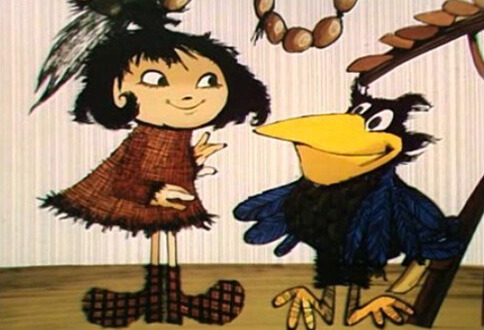
2D POČÍTAČOVÁ ANIMACE
a) Vektorová – animujeme například v Adobe Flash, simulujeme papírkovou animaci. Animujeme pomocí keyframů (2 extrémy + dopočítání pohybu mezi nimi, nebo animujeme frame by frame). Animace vektorových kreseb, může být takové interaktivní – hry, aplikace do mobilu, webové bannery
b) Bitmapová – animujeme například v Adobe After Effects, můžeme kombinovat video, animaci, simulaci 3D prostoru, můžeme využít textury, bitmapové efekty (kouř, světla, sníh, déšť)
· Happy Tree Friends (Flash)
· Studio AKKA
· Amanita Design – hry Samorost, Machinaria
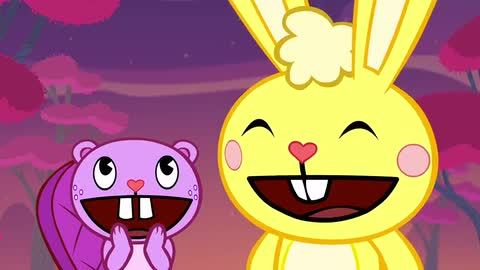
3D POČÍTAČOVÁ ANIMACE
Objevila se kolem 70. let 20. století, je to součást hraného filmu. První 3D animovaný film byl od firmy Pixar. Využívají se fluidní simulace, například proudění kapalin, pohyb látky ve větru apod.
motion capturing – snímání pohybu, herci si na sebe nasadí speciální obleky s čipy, každý pohyb jednotlivého čipu se převede do PC a 3D animace je mnohem jednodušší.

TECHNIKY VIDEOTVORBY
Videoklip
krátkometrážní audiovizuální dílo, jehož zvukovou složkou je v celé nebo podstatné míře záznam uměleckého výkonu hudebního díla.
Obrazová složka má nějaký vztah k hudebnímu dílu, které ji doprovází (ať je to stejná nálada nebo děj), využívá obvyklých i méně obvyklých filmových technik, často jde o běžný krátký abstraktní film (tj. film bez děje).
Některé motivy jsou ve videoklipech mimořádně časté, někdy např. že videoklip obsahuje i vizuální záznam provádění hudebního díla, taneční scény, někdy v něm přímo vystupují hudebníci, není to ale nezbytně nutné.
Videoklipy jsou hlavní náplní vysílání tzv. hudebních televizí, mezi které patří například MTV. K jejich rozšíření došlo právě díky těmto televizním stanicím v 80. letech 20. století.
Princess Chelsea - The Cigarette Duet
https://www.youtube.com/watch?v=4TV_128Fz2g
Showreel
Prezentace autora, spojení animace a videa, ukázka dovedností v oblasti vizuálních komunikací. Ukázka Lukáš Veverka / Showreel 2016.
Virální video
Virální video nebo také videomem či asi nejproslulejší virál (ze slova virus) je video, které se stane populárním prostřednictvím sdílení na internetu. Virální se nazývá proto, že si je lidé posílají mezi sebou, a šíří se tak jako virus. Nejčastěji se šíří prostřednictvím stránek na sdílení videa (YouTube), sociálních sítí a e-mailu.
Virální video může být vytvořeno jako součást virálního marketingu (jednotlivci i firmami), ale často to jsou videa, která jsou vytvořena spontánně a lidé je sdílejí kvůli zajímavému obsahu.
Za první virální video lze považovat video Bad day z roku 1997. To trvá pouze 26 sekund a jeho kvalita není nějak zázračná. To ho ovšem činí optimálním pro šíření pomocí emailu.
Dále lze uvést třeba Star Wars kid z roku 2003, na němž žák střední školy neuměle napodoboval postavu z Hvězdných válek, Dartha Maula a spolužáci ho nahráli na internet. Tento případ se často uvádí jako první případ kyberšikany.
Dále se proslavil třeba Gary Brolsma s videem s názvem Numa Numa, ve kterém zajímavě otvírá pusu a celkově se pohybuje na písničku „Dragostea din tei“. BBC uvedla, že se jednalo o druhé nejsledovanější video historie, hned po již zmíněném Star Wars kid.
Dále se mezi slavnějšími virály prosadil nespočet videí, uveďme třeba: Charlie bit my finger nebo La Caida de Edgar (el original).
Hodně zhlédnutí má virál Gangnam Style, který jako první překonal na YouTube hranici jedné miliardy zhlédnutí. Dne 24. srpna 2015 video dokonce překonalo hranici 2 miliardy a 400 miliónů zhlédnutí. Video bylo původně určeno pouze pro jihokorejské publikum.
Produktové video
Je v dnešní době naprostý základ. Jedná se o krátké video sloužící k představení firmy nebo jednotlivého produktu. Nepřesně se mu říká také firemní video nebo promo video.
V roce 2012 se online videa stala nejrychleji rostoucím reklamním formátem na světě s téměř 55% meziročním nárůstem tržeb. A odtud už dělí jen malý krůček k velkému nákupu.
Průměrná užitnost jednoho videa je 4 roky, což z něj činí velmi výhodnou investici.
Lidé si vaši značku snáze zapamatují, když o vás shlédnou poutavé video.
A 90 % lidí, kteří dokoukají video do konce, klikne na link, který se nachází na konci videa.
A odtud už je dělí jen malý krůček k velkému nákupu.
Sony Xperia Z Commercial
https://www.youtube.com/watch?v=Qfg9UqRsiSE
Explainer video
Vychází ze slova explain, což znamená vysvětlit. Explainer video vám usnadní komunikaci se zákazníky, když:
Máte složitý produkt, který většina lidí nechápe?
Zabere vám půl hodiny, než všem vysvětlíte, co vlastně vaše služba dělá?
Dobře udělané explainer video váš problém vyřeší. Proč? Protože zapojí i vizuální stránku, ze které divák vstřebá informace mnohem rychleji. A jaká explainer videa jsou nejlepší? No přeci kreslená.
REMARKETY / 2D EXPLAINER VIDEO
http://go.yumyumvideos.com/blog/10-types-of-explainer-videos
https://www.youtube.com/watch?time_continue=92&v=OJg7H7Ssbog
HP / SERENA
https://vimeo.com/11444552
Kickstarter video
Poměrně nový typ videa, pro které se rozhodne každý, kdo to se svou crowdfundingovou kampaní myslí aspoň trochu vážně.
Zaujměte svým produktem ve videu a máte napůl vyhráno. Důležitý je příběh, protože lidé příběhy milují už úplně od začátku všech… lidí.
Pro inspiraci koukněte na úspěšná crowdfundingová videa a držte se alespoň rámcově konceptu:
Ilustrovat problém
Ukázat řešení s vaším produktem
Zdůraznit výhody
Call-to-acion
https://www.youtube.com/watch?v=Q8d0U-vMkSE
MULTIMEDIÁLNÍ TECHNIKY
Multimediální tvorba je speciální druh tvorby procházející v současnosti největším vývojem. Lze do ní obecně zařadit vše od víceplátnových filmových prezentací, přes polyekrán, laternu magiku až po dnešní počítačově vytvořené multimediální prezentace.
V pojetí dnešní praxe, multimediální tvorba zahrnuje podklady obrazu, zvuku a grafiky, které jsou dále trikově a případně barevně upravovány a syntetickým způsobem počítačově zpracovávány do konečného výsledku (významu).
Při výrobě je podmínkou znát přesnou technickou specifikaci pro zhotovení podkladů, přesný postup (technologii) dalšího zpracování a konečný záměr.
Je doporučeno vytvořit ověřovací zkoušku postupu práce, pokud to finanční a časové podmínky umožňují.
Bez jistoty o postupu zpracování a výsledku je nutná přesná dohoda tvůrců s produkcí, není obvykle možné stanovit harmonogram, pracnost, náklady a zaručit konečný výsledek.
Interaktivní webová prezentace nesoucí prvky animace, videa.
Interaktivní webová prezentace nesoucí prvky animace, videa.
BEOPLAY
https://www.beoplay.com/en/landingpages/ss18#film
KALPA PARAMIGIANI
https://kalpa.parmigiani.com/#!/collection/kalpa-hebdomadaire/details
2 notes
·
View notes
Text
Themes of Eastern European Stop-Motion Films
Theses by Choi Youkyung: https://search.proquest.com/docview/1684021691?pq-origsite=primo This thesis explains the order and events that developed stop-motion techniques in Eastern Europe, and the historical/political effect on a group of stop-motion animators and the animations they produced, it also mentions the uprising of stop-motion in the US with the influence of these animators.
Stop-motion animation flourished in the Czech Republic in its golden age of the 50′s- 60′s with a long tradition of puppetry and cultural tendency towards surrealism. The soviet war was formed at the end of the civil war and many artists were commissioned in the Soviet Union to produce work to propagate socialist ideas. In the early twentieth century the first film camera was invented and experimentation with stop-motion began, starting with Ladislas Starevich’s ‘the battle of the stag beetles’ (1910).
While artists experimented with stop-motion in Europe, it was being used in the US with Willis O’Brien who mixed live action with stop motion. George Pal also gathered recognition in Europe and America, he opened his own cartoon studio where he tried stop-motion for a cigarette company commercial, one of his works include ‘‘Tulips shall grow’ (1942) which criticised Germany’s envision of the Netherlands. Rankin/Bass productions were active from the 60′s- 80′s they worked for commercials however they wanted to focus on exclusively animation production so they visited Japan in 1958 to learn about their animation industry, this is where they hired Tadahiro Mochianaga who was a pioneer of Japanese stop-motion animation and his early apprentices includes Kihachiro Kawamoto (mentioned in my previous post) with Mochianaga Rankin’s stop-motion work included ‘The New Adventures of Pinocchio’ (1960) and ‘The Daydreamer’ (1966).
Whilst stop motion reached the US public through television, censorship and nationalisation of the film industry were affecting artists in the Soviet Union, pro-Stalinist Brezhnev came to power from ‘64 to ‘82. In the 60′s artists were banned and censored however in the 70′s they were exiled, deported or placed under house arrest, it was severe for filmmakers but animators could slip under the officials eyes. In ‘61 Yuri Norstein started his animation career at Soyuzmultfilm- one of the most influential animation production companies, his animations include layers of painted thick glass for three dimensional effects. He was inspired by Turkish poet Nazim Hikmet’s Tale of Tales and proposed production for an animation explaining it was about a poet who could not write, but as production began it shaped into a realistic depiction of Russia after World War Two based on his childhood memories, Soviet Officials forbade him from travelling for screenings as they didn’t want it to be shown to the public. As previously mentioned in my blog and timeline; Trnka and Švankmajer we’re also able to place political and social meanings into their animation work with consequences such as Trnka’s films being banned and Švankmajer’s ban from filmmaking from 72-79
Jiří Barta followed Švankmajer in the 80′s, after the Soviet Union’s collapse in ‘89 artists could express themselves free of censorship however government financial support ceased and so did Soyuzmultfilm in Russia, animators switched to different jobs to live easier whilst in the US stop-motion animation boomed with Tim Burton’s “The Nightmare Before Christmas” which was one of the first Stop-motion films to have such a big budget and specialist crew behind it.
1 note
·
View note
Note
Is that strange space pirate show animated similarly to Fantastic Planet? Not to throw Fantastic Planet under the bus.
Yeah, they both use similar techniques and both have that weird European space aesthetic; the main difference is that Fantastic Planet had a lot more budget to play with than The Treasure Planet. It should also be noted that Fantastic Planet was animated by the Jiří TrnkaStudio, which at the time had been in the animation game for over 20 years, whereas The Treasure Planet was literally the first feature-length animated film to come out of Bulgaria.
7 notes
·
View notes
Text
Na sklonku letošního roku uplyne padesát let od smrti jednoho z českých nejvšestrannějších umělců, Jiřího Trnky. Toto výročí a především umělcovu osobnost a tvorbu si diváci budou moci připomenout díky dokumentárnímu filmu Joëla Fargese a Terezy Brdečkové Jiří Trnka: Nalezený přítel, který vznikl v česko-francouzské koprodukci a do kin jej uvede distribuční společnost Cinemart 28. listopadu 2019.
Dokument Jiří Trnka: Nalezený přítel je vyprávěn pohledem režiséra, který pátrá po osudu Jiřího Trnky, autora filmů jeho dětství, které viděl ve Francii jako malý v dělnickém kině, které promítalo východoevropskou animaci. Při svých cestách do Československa se v pozdějších letech seznámil s Terezou Brdečkovou a společně se snaží nalézt odpověď na otázku, kdo byl Jiří Trnka. Věnují se jeho nesnadným začátkům, ovlivněním českou loutkářkou tradicí, téměř osudově náhodnému přizvání k vedení studia animovaného filmu. Sledují jeho cestu za světovým úspěchem v temných 50. letech až k jeho konfliktu s komunistickým režimem na sklonku života.
Jiří Trnka, výtvarník, ilustrátor, spisovatel, scenárista, loutkář, sochař a jeden ze zakladatelů českého animovaného filmu, je jedním z největších a nejvšestrannějších českých umělců 20. století, jemuž se podařilo významně ovlivnit umělecké dění ve světovém měřítku. Začínal v Plzni v Divadle Spejbla a Hurvínka Josefa Skupy, v roce 1945 spoluzakládal studio kresleného filmu Bratři v triku, v roce 1947 založil Studio loutkového filmu Jiřího Trnky a stává se průkopníkem nové technologie. Díky Trnkově géniu a jeho skvělému malému kolektivu vzniká slavná česká škola loutkové animace. Na Západě získává festivalové ceny a stává se výhodným vývozním artiklem. Krása jeho filmů společně s jeho nádherným impozantním zjevem z něj udělají světovou osobnost. Komunistický režim na něm demonstruje, jak je humanistický a uměnímilovný. Trnka se nikdy nestane zaměstnancem, není v KSČ, dělá si, co uzná za vhodné. Je králem české knižní ilustrace i loutkového filmu. Jenže žije ve stínu totalitní moci, a to má své důsledky. V polovině šedesátých let se Trnka připravuje na svoje poslední dílo: krátký film Ruka, tvrdou alegorii totalitní moci. Film získá cenu na festivalu v Annecy, ale narazí na Československou cenzuru.
Jiřnd
Film Jiří Trnka: Nalezený přítel Joëla Fargese a Terezy Brdečkové v červnu získal na festivalu Il Cinema Ritrovato v Boloni cenu studentské poroty za nejlepší dokumentární film. Porota své rozhodnutí porota okomentovala následovně: “Rozhodli jsme se ocenit dokument, který nás nejvíce zasáhl svou schopností vyprávět zvláštním způsobem příběh, který jsme dosud neznali, a to emocionálním pohledem režiséra.” Pro lehkost vyprávění, kvalitu a množství archivních materiálů jsou vítězi Joël Farges a Tereza Brdečková s filmem „Jiří Trnka – Nalezený přítel“. Festival Il Cinema Ritrovato ukazuje velká mistrovská díla světového filmu, zároveň je vyzdvihuje v sekci věnované dokumentárním filmům o historii kinematografie.
Producentem filmu je společnost Hausboot Production a snímek vznikl v koprodukci se společností Kolam Production a s Českou televizí za podpory Státního fondu kinematografie a programu Creative Europe Media.
Do českých kin snímek uvede CinemArt 28. listopadu 2019.
(adsbygoogle = window.adsbygoogle || []).push({});
Dokumentární film JIŘÍ TRNKA: NALEZENÝ PŘÍTEL připomene život a tvorbu Jiřího Trnky Na sklonku letošního roku uplyne padesát let od smrti jednoho z českých nejvšestrannějších umělců, Jiřího Trnky. Toto výročí a především umělcovu osobnost a tvorbu si diváci budou moci připomenout díky dokumentárnímu filmu Joëla Fargese a Terezy Brdečkové
0 notes